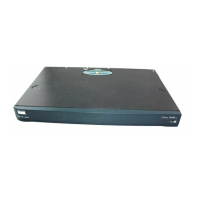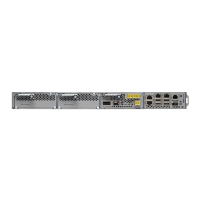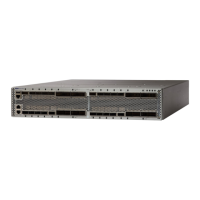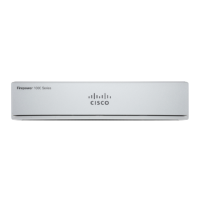Before you begin
Be sure you have have completed the appropriate previous steps in the restore process as described in Restore
a Management Center to its Factory Defaults, on page 51.
Procedure
Step 1 From the restore utility main menu, choose 1 IP Configuration.
Step 2 Choose the appliance’s management interface (generally eth0).
Step 3 Choose the protocol you are using for your management network: IPv4 or IPv6.
Options for assigning an IP address to the management interface appear.
Step 4 Choose a method to assign an IP address to the management interface:
• Static: A series of pages prompts you to manually enter the IP address, network mask or prefix length,
and default gateway for the management interface.
• DHCP: The appliance automatically detects the IP address, network mask or prefix length, and default
gateway for the management interface, and then displays the IP address.
Step 5 When prompted, confirm your settings.
If prompted, confirm the IP address assigned to the appliance’s management interface. If you are using LOM,
remember that the management IP address for the appliance is not the LOM IP address.
Specify the ISO Image Location and Transport Method
After you configure the management IP address that the restore process will use to download the files it needs,
you must identify which ISO image you will use to restore the appliance. This is the ISO image that you
downloaded from the Support Site (see Obtain the Restore ISO and Update Files, on page 53) and stored on
a web server, FTP server, or SCP-enabled host.
Before you begin
Be sure you have have completed the appropriate previous steps in the restore process as described in Restore
a Management Center to its Factory Defaults, on page 51.
Procedure
Step 1 From the restore utility main menu, choose 2 Choose the transport protocol.
Step 2 On the page that appears, choose either HTTP, FTP, or SCP.
Step 3 Use the series of pages presented by the restore utility to provide the necessary information for the protocol
you chose; see Restore Files Download Configuration, on page 57.
If your information was correct, the appliance connects to the server and displays a list of the Cisco ISO
images in the location you specified.
Step 4 Choose the ISO image you want to use.
Cisco Firepower Management Center 1600, 2600, and 4600 Getting Started Guide
56
Firepower Management Center 1600, 2600, and 4600 Getting Started Guide
Specify the ISO Image Location and Transport Method

